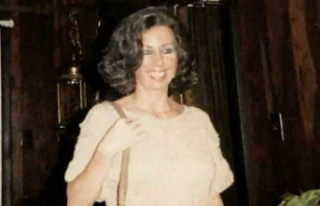Who among us has never laughed at seeing a friend stumble on the sidewalk, bump their head on their way up, or miss a step on their way up the stairs?
I'm the first to admit myself guilty of this reaction! I would also like to apologize (again) to my colleague Janie for the endless laughter I had when she collapsed in slow motion, as if in small jolts that seemed endless, her legs numb , only to see it finally end up on the floor.
Clumsiness, imbalances, falls. It's the raw material for Charlie Chaplin's adventures, burlesque performances with banana peels and Funny Video-type shows in which you see children falling and people "getting angry"! Witnessing these scenes, we laugh heartily, often uncontrollably.
Shouldn't we feel empathy for the other who, after all, finds themselves in a vulnerable situation that can be potentially humiliating? Rest assured, we don't necessarily laugh out of lack of empathy or sadism.
As a clinical psychologist expert in the field of emotion regulation, I propose to shed light on the ingredients in these situations that have great potential to trigger our often benevolent laughter.
The first of these ingredients is the surprise effect. More specifically, it is to see a person surprised by a daily life situation, when everything was under control for them a few seconds before. The unexpected situation surprises us and creates a gap with the foreseeable, with what we expected to see.
This incongruous situation underscores our prediction errors: the sequence of X was predicted to be Y and, ultimately, the sequence emerges unexpectedly via B. We made a mistake in our prediction of what was to come. It's no longer consistent. Laughing at the situation would be a way to resolve the incongruity by formulating a new, more coherent comic interpretation of what we are witnessing.
Faced with this surprising and incongruous situation, our brain goes in search of information that will allow us to interpret what is happening and react accordingly. What does the face of the person who stumbles communicate to us? What we are going to decode there will be decisive in our reaction.
One study explored this avenue of research with participants viewing 210 images representing three types of faces:
faces expressing a puzzled look;
faces expressing pain or anger;
people with the body placed in awkward positions, without the face being visible (e.g. face hidden by skis; or the head shown in profile with the face hidden by the person's arm).
A surplus of 20 landscape images had been added throughout the photo set, to confuse participants as to the purpose of the study. Participants were asked to press a button each time a landscape image appeared, and their brain activity was recorded during the task. Participants were also asked to rate how funny they found each image.
At the end of the study, the participants rated the images showing puzzled faces as being funnier than images in which the faces expressed pain or anger, and funnier than images in which bodies were seen in burlesque positions, but without seeing the facial expression. The brain data also supported facial expression as an ingredient in our hilarity in these bizarre situations.
Thus, when we perceive perplexity in the expression of the face of the victim of awkwardness (look taken aback, surprised, bewildered), this information can trigger our laughter. On the other hand, if we can read suffering or anger in the facial expression, we will then be touched by the distress of the victim of the fall, empathetic to his distress, which will prevent us from laughing. Our neural circuits would therefore have the ability to recognize and appreciate the funny elements of bad luck situations, analyzing the context as non-threatening.
Witnessing another person's unfortunate situation prompts us to imagine ourselves in that same situation. "What if it was me…?" »
We identify with what she lives and what she must feel. This exercise in empathy can quickly activate in us issues of unease, powerlessness, humiliation and shame. Laughter then allows us to exteriorize our relief at not being in the place of this unlucky person.
Let's be forgiven for laughing at comedic situations of other people's awkwardness! We do not laugh at each other's pain or distress; we react to the surprise, the incongruity and the bewildered expression of the other, having decoded that he is neither in distress nor really hurt himself.
Looking forward to making you laugh after getting my feet stuck in a sidewalk crack!
*Geneviève Beaulieu-Pelletier, psychologist, lecturer and associate professor, University of Quebec in Montreal (UQAM)












